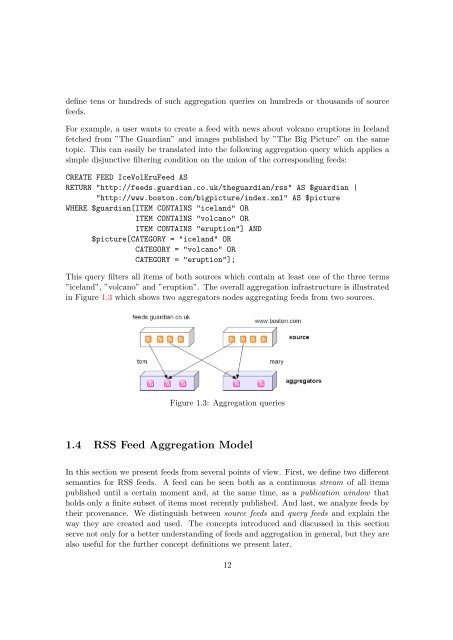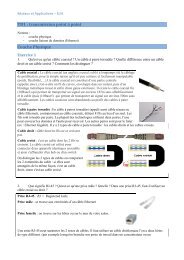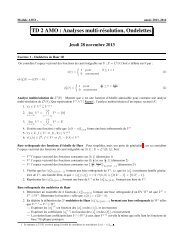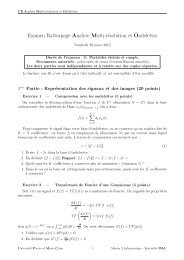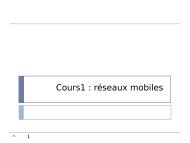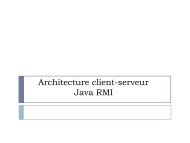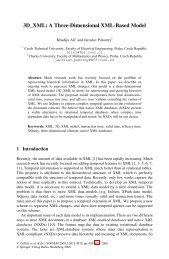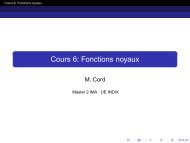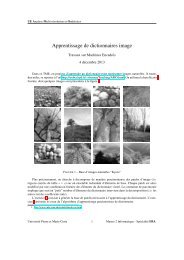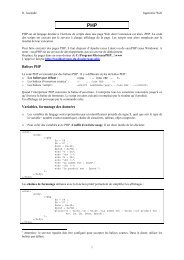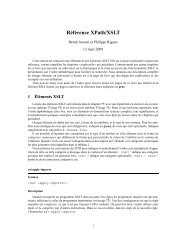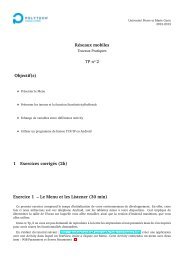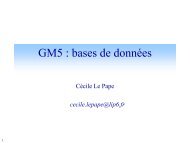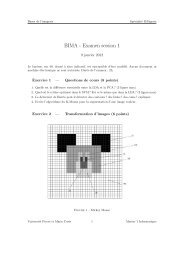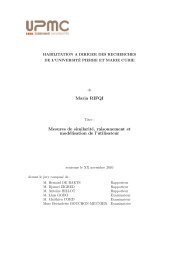Roxana - Gabriela HORINCAR Refresh Strategies and Online ... - LIP6
Roxana - Gabriela HORINCAR Refresh Strategies and Online ... - LIP6
Roxana - Gabriela HORINCAR Refresh Strategies and Online ... - LIP6
You also want an ePaper? Increase the reach of your titles
YUMPU automatically turns print PDFs into web optimized ePapers that Google loves.
define tens or hundreds of such aggregation queries on hundreds or thous<strong>and</strong>s of source<br />
feeds.<br />
For example, a user wants to create a feed with news about volcano eruptions in Icel<strong>and</strong><br />
fetched from ”The Guardian” <strong>and</strong> images published by ”The Big Picture” on the same<br />
topic. This can easily be translated into the following aggregation query which applies a<br />
simple disjunctive filtering condition on the union of the corresponding feeds:<br />
CREATE FEED IceVolEruFeed AS<br />
RETURN "http://feeds.guardian.co.uk/theguardian/rss" AS $guardian |<br />
"http://www.boston.com/bigpicture/index.xml" AS $picture<br />
WHERE $guardian[ITEM CONTAINS "icel<strong>and</strong>" OR<br />
ITEM CONTAINS "volcano" OR<br />
ITEM CONTAINS "eruption"] AND<br />
$picture[CATEGORY = "icel<strong>and</strong>" OR<br />
CATEGORY = "volcano" OR<br />
CATEGORY = "eruption"];<br />
This query filters all items of both sources which contain at least one of the three terms<br />
”icel<strong>and</strong>”, ”volcano” <strong>and</strong> ”eruption”. The overall aggregation infrastructure is illustrated<br />
in Figure 1.3 which shows two aggregators nodes aggregating feeds from two sources.<br />
Figure 1.3: Aggregation queries<br />
1.4 RSS Feed Aggregation Model<br />
In this section we present feeds from several points of view. First, we define two different<br />
semantics for RSS feeds. A feed can be seen both as a continuous stream of all items<br />
published until a certain moment <strong>and</strong>, at the same time, as a publication window that<br />
holds only a finite subset of items most recently published. And last, we analyze feeds by<br />
their provenance. We distinguish between source feeds <strong>and</strong> query feeds <strong>and</strong> explain the<br />
way they are created <strong>and</strong> used. The concepts introduced <strong>and</strong> discussed in this section<br />
serve not only for a better underst<strong>and</strong>ing of feeds <strong>and</strong> aggregation in general, but they are<br />
also useful for the further concept definitions we present later.<br />
12


